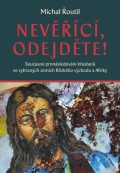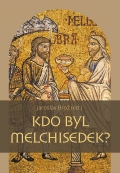Series Pro Oriente
Dějiny křesťanství v Asii
Díl první: od počátků do roku 1500
Author: Samuel H. Moffett
Translated by Drahomíra Michnová from the original publication “A History of Christianity in Asia. Volume I: Beginnings to 1500”, Maryknoll, New York 1998.
This first volume of the two-volume monograph by Samuela Hugha Moffett, Emeritus Professor at Princeton University, constitutes a first attempt to capture the complex history of Christianity and of the Church in Asia. It thus fills a substantial vacuum, albeit one that specialists from a variety of fields have attempted to fill by means of a whole library of partial and not readily accessible studies.
The organization of the book is by chronological period on the one hand and in accordance to a geographical key on the other. The spread of of Christianity on the largest continent of the planet was not a smooth or continuous process; several civilizations, cultures and ethnic groups contributed to the process. The author also poses the question as to why the attempts to evangelize Asia did not result in the christianization of Asia, and why, on the contrary, other religions strengthened their hold. At least until the end of the 12th century, primacy in missionary activities in this region belonged to the Church of the East. This volume is therefore largely devoted to the history of the Church in Persia, not merely in its traditional territory (that is, ancient Mesopotamia – present-day Iraq), but also including Afghanistan, India, Central Asia, Mongolia and China. The author has highlighted the gradual birth of the Church of the East, the important Church synods, theological authorities (Jaballaha, Dadisho, Rabbula), important cities (Edessa, Seleucia-Ctesiphon, Nisibis), as well as the relations of the Christians with the Zoroastrian Sassanid dynasty and, later, with the muslim Ummayyads and Abbasids khalifs and the pagan Mongol ilkhans. The book is particularly thorough in its description of the evangelical activities of the Nestorian missionaries, and in its discussion of the influence of Syriac and the Syriac script on the culture and literature of the nations of the steppes, as also on Indian and Chinese Christianity.







